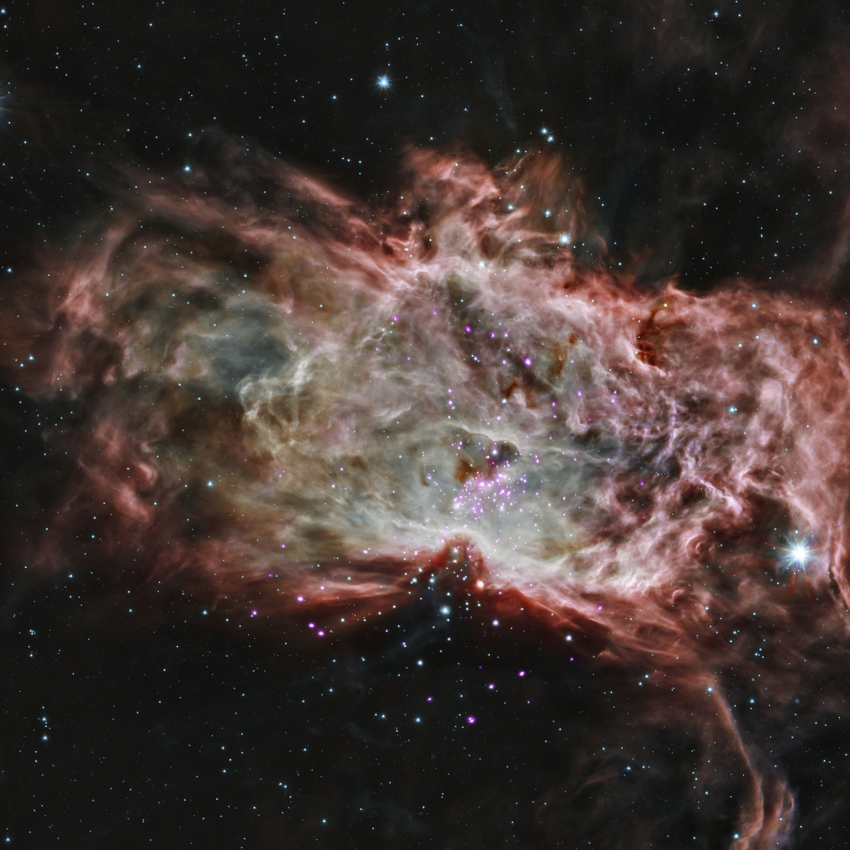
 Credit: X-ray: NASA/CXC/PSU/K.Getman, E.Feigelson, M.Kuhn & the MYStIX team; Infrared:NASA/JPL-Caltech
Credit: X-ray: NASA/CXC/PSU/K.Getman, E.Feigelson, M.Kuhn & the MYStIX team; Infrared:NASA/JPL-Caltech
Burning In from the Outside?
Stars are usually born in groups from clouds of gas and dust distributed throughout the galaxy. Star formation features a complex interplay between gravity, rotation, and heat. A common idea among astronomers is that star formation proceeds from the center of a cloud to its outskirts, burning through the cloud from inside to outside. But new data are challenging that idea. The image above shows a composite X-ray and infrared image of a young cluster, NGC 2024, at the heart of the Flame Nebula. The X-ray data (from the Chandra X-ray Observatory, in purple) and the infrared image (from the Spitzer Space Telescope) let astronomers peer deep within the cluster to obtain a near-complete census of the newborn stars. And what they found was surprising: instead of finding the firstborn stars in the center of the cluster, the Chandra and Spitzer data show that the oldest stars are actually found in the outskirts of the cluster, and younger stars in the center. This could mean that star formation begins in the outer part of the nebula and proceeds towards the center of the cluster. A more likely explanation is that star formation actually begins at the center of the nebula, but, because of the high gas and dust density in the center, continues on for millions or billions of years, while it shuts off earlier in the outer parts of the star-forming cloud.
Published: June 9, 2014
<
HEA Dictionary ● Archive
● Search HEAPOW
● Other Languages
● HEAPOW on Facebook
● Download all Images
● Education ● HEAD
>

Each week the HEASARC
brings you new, exciting and beautiful images from X-ray and Gamma ray
astronomy. Check back each week and be sure to check out the HEAPOW archive!
Last modified Tuesday, 27-Feb-2024 10:10:07 EST


